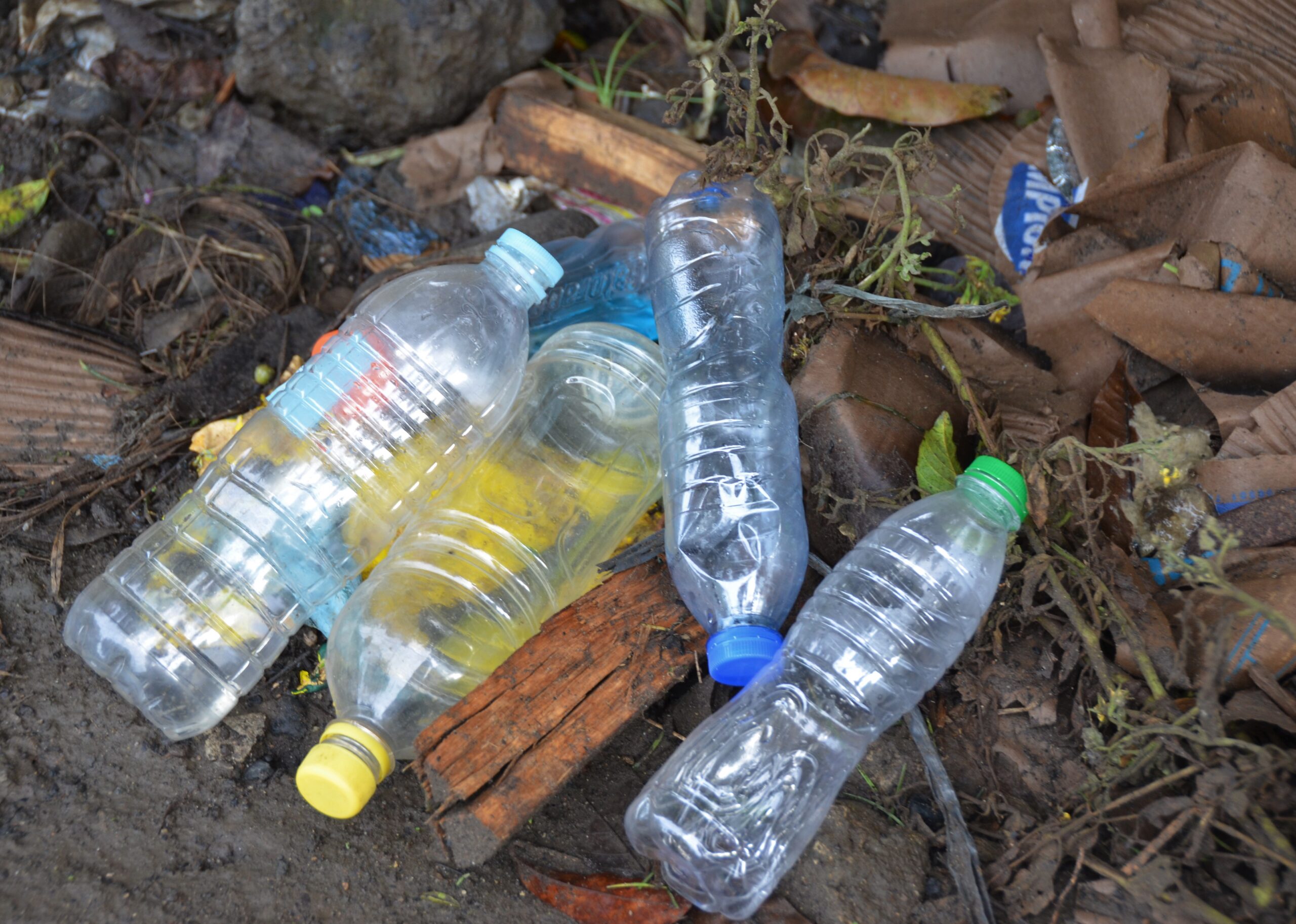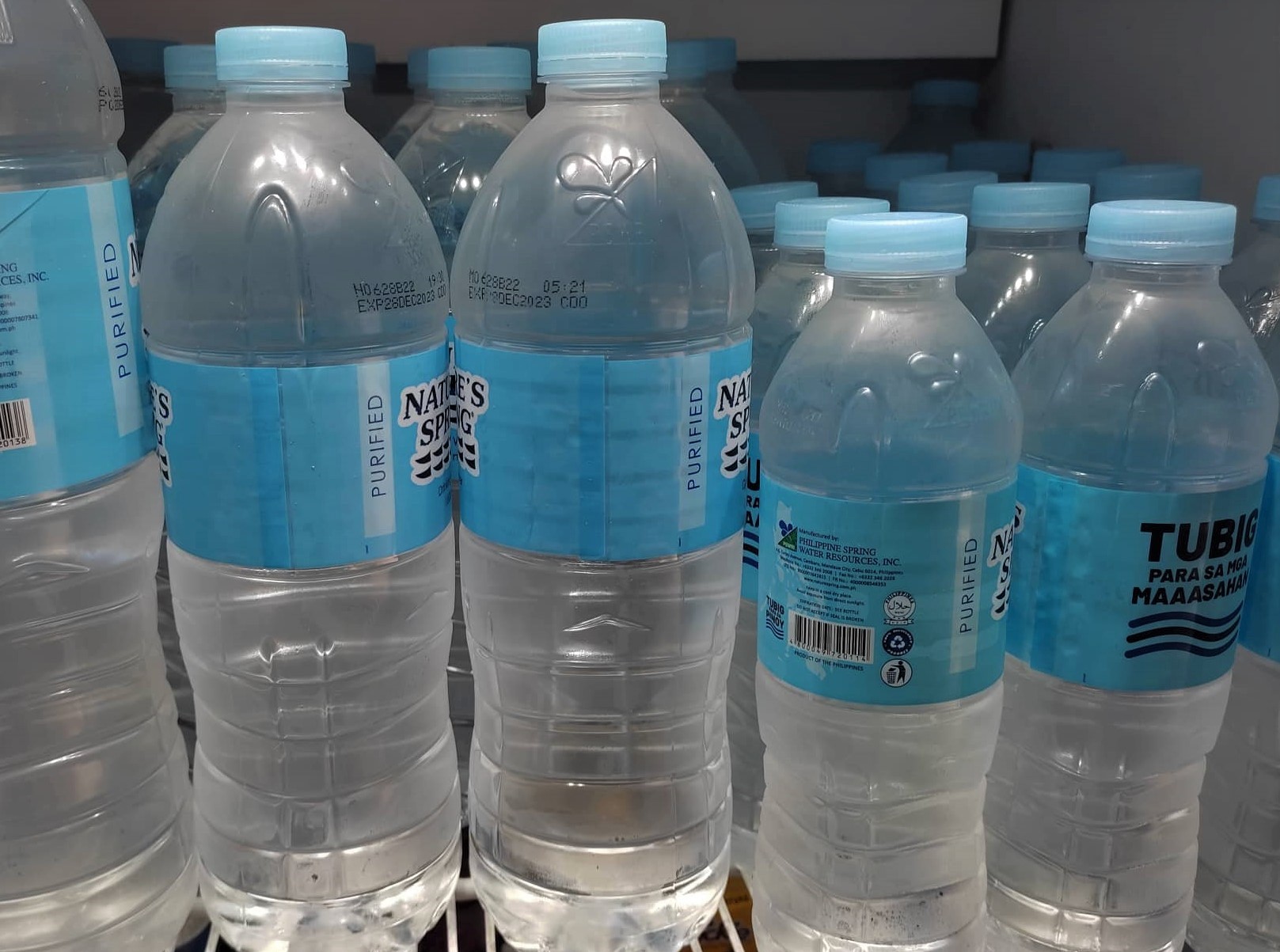Text and Photos by Henrylito D. Tacio
(Second of Two Parts)
When people talk of single-use plastics, they always think of plastic bags and sachets. But single-use plastics also include bottle plastics, which are typically used to store liquids such as water and soft drinks.
Plastic bottles were first used commercially in 1947, but it didn’t catch attention because they were expensive to make. In 1973, Engr. Nathaniel Wyeth patented polyethylene terephthalate (PET) bottles, which could withstand the pressure of carbonated liquids.
When PET was commercially introduced, plastic bottles became popular with both manufacturers and customers because they are lighter, cheaper, and easier to transport than glass bottles.
But the biggest advantage of plastic bottles over their glass counterparts is their superior resistance to breakage in both production and transportation. As a result, the food industry replaced glass bottles with plastic bottles.
It was just a matter of time that plastic bottles were used in packaging water. Plastic water bottles became a hit among consumers, who consider them as a safer alternative to 19th-century municipal water supplies that could be contaminated with pathogens like cholera and typhoid.
What most Filipinos don’t know is that plastic water bottles are not sustainably made.
“Plastic bottles are commonly made from polyethylene terephthalate (PET), which is petroleum-based and non-renewable,” writes theonemovement.co’s Ariana Palmeiri. If you fill a plastic water bottle, so it is about 25% full, that’s about how much oil took to make the bottle.
It takes three times the amount of water in a bottle of water to make it as it does to fill it,
according to healthyhumanlife.com. In like manner, it takes almost 2,000 times the energy to manufacture a bottle of water than it does to produce tap water.
Despite these facts, water sold in plastic bottles continues to be popular. In fact, one million plastic water bottles are sold every minute globally, The Guardian reports. That’s about 20,000 bottles every second.
Water left in a plastic bottle for a long time is not safe to drink. Although water, in and of itself, does not go bad (the reason why there’s no expiration dates), the plastic bottle water is contained in does “expire.”
“Typically, water is bottled in PET for retail bottles,” explains drinkwater.com. “What’s alarming about this type of bottles is that plastics contaminate the liquid bottle once expired or exposed to excessive heat, including exposure to sunlight or hot cars. The toxic chemicals that are contained in this plastic will enter the water, not only affecting the taste of the water but also creating serious health implications for the consumer, as well.”
Although there’s really no precise way to predict exactly when the plastic will leach into the water, “the two-year expiration date is more of a guess of when the water bottle is most likely to have been exposed to heat or when it’s starting to degrade.”
Although PET bottles are approved for single use and for reuse, many manufacturers and consumer advocates urge the public to limit their PET bottles to one-time use only. Plastic bottles are discouraged to be used, especially those that show even slight signs of wear and tear, such as cracks or dings.


“These allow chemicals to more readily leach out of them. Keep in mind that tears can be microscopic and hard to see. That’s one reason why one-use-only plastic bottles aren’t recommended for reuse,” writes healthline.com’s Corey Whelan.
“Use plastic bottles with caution,” Whelan urges. “Never heat or reuse them.”
Most of those plastic water bottles bought are thrown away after drinking the water. Only 9% of plastic gets recycled. Most of those plastics find their way to landfills.
Studies show that 80% of plastic water bottles end up in landfills. In the environment, plastic bottles take 450 years to break down into tiny microplastic (that still pollutes and leaches toxins),” writes Palmeiri.
In a landfill, a single bottle can take up to 1,000 years to break down. “When plastic water bottles end up in landfills, they still absorb and leach toxic chemicals as they break up into tiny polluted pieces,” Palmeiri writes. “Plus, all landfills eventually leak. This means that runoff from landfills, carrying toxic chemicals from our waste, can easily end up in our waterways.”
Some thrown-away plastic water bottles, which are buoyant, can be carried to the oceans. “These bottles may very well be carried by wind, storm water, or other processes to sewers, rivers, lakes and other waterways that may ultimately deposit the bottle in the ocean,” National Geographic notes.
“At any given time, the plastic bottle is one of the top three pieces of trash found in the ocean,” stated 4ocean.com.
“When plastic bottles end up in the oceans, they pose another kind of threat entirely,” writes Palmeiri. “It’s estimated there will be more plastic than fish in the ocean by 2050. The plastic in the ocean poses a risk of being ingested by marine mammals, fish, and sea birds.”
Another threat from plastic bottles is the microplastics, small plastic debris pieces measuring 5 millimeters or smaller. Although the World Health Organization says there is no evidence consumption of microplastics affect your health, it is still an area of concern.
In a study published in 2018 in Frontiers in Chemistry, it was found “plastic contamination is rampant in plastic water bottles.” The study analyzed 259 bottled waters sold in several countries. It was found that 93% of them contained microplastic synthetic polymer particles, reported Time’s Markham Reid.
“Many of those particles weren’t all that small,” Reid wrote. He quoted Sherri Mason, author of the study and a sustainability researcher at Penn State Erie, The Behrend College, as saying: “Some were definitely visible without a magnifying glass or microscope.”
Not only that, plastic water bottles shed hundreds of chemicals into the water they hold, according to a study which was published in Journal of Hazardous Materials.
Scientists had known for years that chemicals can leach out of plastic. Leaching happens when chemicals from the plastic mix with whatever liquid you put inside.
“Water stored in older plastic bottles contained the highest levels of plastic-related chemicals,” wrote Lindsey Konkel Neabore for Science News for Students. “Running the bottles through a dishwasher worsened the leaching. After a single wash cycle, more than 3,500 different compounds ended up in a bottle’s water.”
Dishwashing, the study found out, appeared to boost the release of plastic’s chemicals.
If you drink from plastic bottles, never leave them in your cars. Or taking them with you to the beach or pool as this could heat them to a temperature that’s deemed unsafe. “Chemical leaching occurs when heat causes the toxic chemicals from the plastic to be released into the water,” home.drinkflowater.com says.
Plastic leachate can have detrimental health effects. One of the chemicals found in plastics is bisphenol A (BPA), which is banned in countries around the world due to its toxicity. A synthetic hormone, BPA mimics estrogen. “BPA exposure is linked to multiple health effects including fertility issues, altered brain development, cancer and heart complications,” says cleanwateraction.org’s Tapum Pied.
“The plastics chemical family of phthalates also is at the top of researchers’ list of concerns,” the Harvard University reports. “Like BPA, phthalates are endocrine disruptors, chemicals that can enter the body through food and personal care products and interfere with hormones the body itself produces.”
Another concern: plastic water bottles can harbor harmful bacteria. “Which is why most manufacturers recommend you use them only once,” webMD.com says. “In truth, bacterial growth in water bottles is a much bigger concern than chemical leaching.”
WebMD.com says bacterial growth can happen quickly from the ordinary use of touching your mouth to your bottle. “Even unfinished beverages left at room temperature can have startling bacteria growth throughout the day,” it says.

